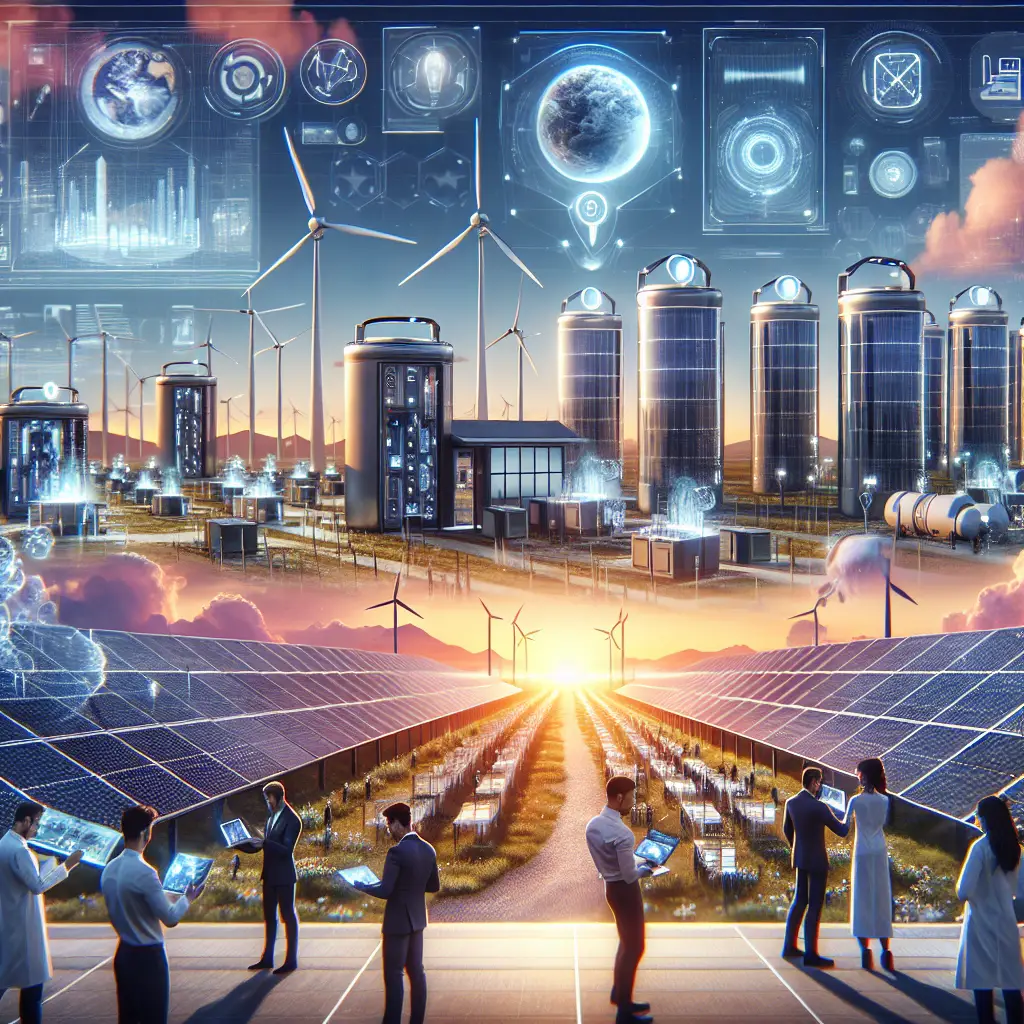Long-Term Renewable Energy Storage
As the world increasingly shifts towards sustainable energy solutions, the challenge of storing renewable energy efficiently for long durations becomes more crucial. With the intermittency of sources like wind and solar, a robust long-term storage system is essential for maintaining a stable energy supply. This article explores the technologies, challenges, and future of long-term renewable energy storage.
The Need for Long-Term Energy Storage
Renewable energy is a cleaner, more sustainable source for electricity, but it comes with its own set of challenges, primarily its variability. The sun doesn’t always shine, and the wind doesn’t always blow, leading to unpredictable energy production. Without effective storage solutions, excess energy generated during peak production cannot be saved for periods when energy production is low.
The need for long-term energy storage arises from several factors:
- Jumpstart or increase the rate of adoption of renewable energies.
- Balance supply and demand across all seasons.
- Improve grid reliability and resilience.
- Help meet climate targets by reducing dependency on fossil fuels.
Current Technologies in Long-Term Energy Storage
Several technologies are leading the way in long-term energy storage. Here are some prominent ones:
Pumped Hydro Storage
This is currently the most widespread form of large-scale energy storage. It involves pumping water from a lower to a higher reservoir when excess energy is available and releasing it back through turbines to generate electricity when needed. While pumped hydro storage is effective, it is limited by geographical constraints.
Battery Storage Systems
Lithium-ion and other advanced batteries are key players in the energy storage market. They are becoming increasingly efficient and affordable. However, their application in long-term storage is currently limited due to energy density and cost issues.
Thermal Energy Storage
Thermal energy storage involves storing energy in the form of heat, using materials like molten salts. It’s particularly useful in solar plants, where heat from the sun can be stored and later converted to electricity. Thermal energy storage benefits from relatively low costs but conversion losses can be a drawback.
Emerging Technologies
As the quest for more effective and scalable energy storage solutions continues, researchers and innovators are working on emerging technologies that promise better efficiency and lower costs.
Hydrogen Fuel Cells
Hydrogen can store energy for long periods. When renewable energy is used to produce hydrogen through electrolysis, it can be stored and later converted back to electricity in fuel cells. Despite being a promising solution, it faces challenges in terms of efficiency and infrastructure requirements.
Flow Batteries
Flow batteries store energy in liquid electrolytes contained within conversion units. They offer the advantage of scaling easily and their capacity to endure for long stretches before losing charge. Commercial application is still in development, with testing ongoing for grid-scale applications.
Compressed Air Energy Storage (CAES)
With CAES, excess energy compresses air into underground caverns, which is later released to spin turbines when electricity is needed. While promising, CAES systems face significant technical challenges and are limited to specific sites.
Future Prospects
The future of renewable energy storage looks promising as technological advancements and increased investment are likely to lead to more efficient and cost-effective solutions. As nations commit to reducing greenhouse gas emissions, the necessity for vast and sustainable energy storage will rise.
Governments and the private sector are investing heavily in research and development of storage technologies. Innovations and improvements in materials, chemistry, and design are expected to contribute significantly to decreasing costs and increasing the capacity and efficiency of storage solutions.
Policy Support and Funding
Government policies and funding play a crucial role in the development of new energy storage technologies. Subsidies, tax incentives, and research grants can accelerate the deployment and scaling of storage technologies.
Conclusion
The long-term storage of renewable energy remains a pivotal challenge to overcome for achieving a sustainable global energy future. Continued innovation, investment in new technologies, and supportive policy frameworks will be essential to develop effective storage solutions. As these technologies mature, they will not only help stabilize energy grids worldwide but also contribute significantly to achieving global climate targets.
As society moves towards a cleaner and greener future, the long-term storage of renewable energy stands as one of the key pillars supporting this transition.










